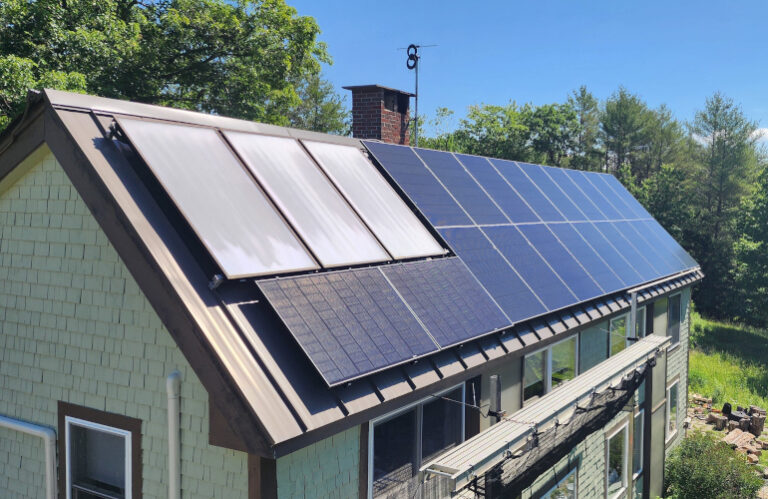Residential solar installers have always had to deal with small size differences between solar panel brands. Even when the industry generally worked within the same 60-cell footprint, the adjacent white space on one brand’s solar panel may be larger than another’s, but only slightly. Today’s competing wafer camps (the M10’s 182mm wafer versus the G12’s 210mm wafer) offer a broader collection of different panel sizes for installers to search through. When the end goal is to generate the most energy in the smallest space, installers today have more options than ever for the best-fit arrays.
Qcells, the most popular residential solar panel brand among the Top Solar Contractors class of 2024, has designed its current residential module based on energy production, BOS and rack compatibility, and logistics efficiency instead of meeting the previously established 60-cell standard. This has led the company to adopt standard 54-cell designs for the residential market using the larger M10 wafer. The latest from the company Q.TRON BLK M-G2+ panel is 10 cm wider than the older panel with 60 cells.

An installation with REC Alpha Pure-RX panels. Credit: Sunpath Services
By comparison, popular residential brand REC has switched to the G12 wafer and uses only 44 full cells in its residential line. The REC Alpha Pure RX panel is 6.5 inches wider than the company’s last 60-cell design.
Those extra inches on each module mean installers have to be more creative with designs to optimize roof space. Matt Wrightsman, customer training manager for design platform Aurora solar energylocal safety requirements should not be overlooked as layouts creep closer to the edge.
“As modules become increasingly larger on roofs, it is more important than ever to pay attention to fire regulations and fire path requirements,” he said.
Robert Santoleri, president of the Pennsylvania installer TerraSol energiessaid larger panels make it more difficult to accommodate setbacks while maximizing space, but his company has found success with specific brands.
“I like the REC [line of panels] because they are actually shorter and wider, closer to square,” he said. “While it remains to be determined whether it is ergonomic for installers to work with a 48-inch. wide panel, it is better for the design. We can maximize exposure on southern roofs with more portrait-style panels.”
While large format panels are also larger power producers – both the Qcells and REC updated modules produce 100W more than their older 60-cell variants – customers are not necessarily opting for fewer panels to more easily meet certain system sizes. TerraSol has discovered that it’s all about maximizing roof space. Last year the average system size for the installer was 11.6 kW, while the average in 2024 is 12.5 kW.
“When most homeowners have more space on their roof, they get more panels,” says Santoleri. “Most homeowners are planning to make electrical upgrades to their homes or are ambitiously considering purchasing an electric car in the coming years. They want to plan ahead for more electricity use.”

An installation with REC Alpha Pure-RX panels.
For customers looking to expand existing arrays or replace aging panels, a previously simple swap-out can be difficult as panel manufacturers focus solely on their large format designs. Qcells said retrofitting an old 60-cell residential array is not ideal with the company’s current module offerings because “there are both physical and electrical factors that make this both uneconomical and inefficient.” The easiest route is to replace the old system with a brand new array or update a small section, says Michael Jimenez, technical sales and warranty claims manager at REC Americas.
“This can be a bit tricky, but there are suitable solutions if this scenario occurs,” he said. “Normally, the newer modules are added to a new subarray or to the end of the existing array. This depends on the existing type of racking and the availability of roof space, in addition to other site-specific characteristics. In some cases, homeowners choose to replace an entire string, either to accommodate a traditional string inverter or for aesthetic reasons. Regardless of the need to retrofit existing arrays, solutions are available.”
Santoleri is concerned about the wide range of panel sizes now used in the residential market. Designing an array is one thing – especially as design programs like Aurora continue to introduce the latest models into their platforms – but installing larger, bulkier panels every day can ultimately impact employee retention and safety in general.
“We are doing our best with tie-offs and ergonomic tools to handle increasingly larger panels, but there are limits,” he said. “My job as an owner is to care about my employees and customers and try to advocate for change. It is up to installers to choose manufacturers who can at least change in the future. I like high-performing companies [that also] seem to have limits when it comes to panel size.


